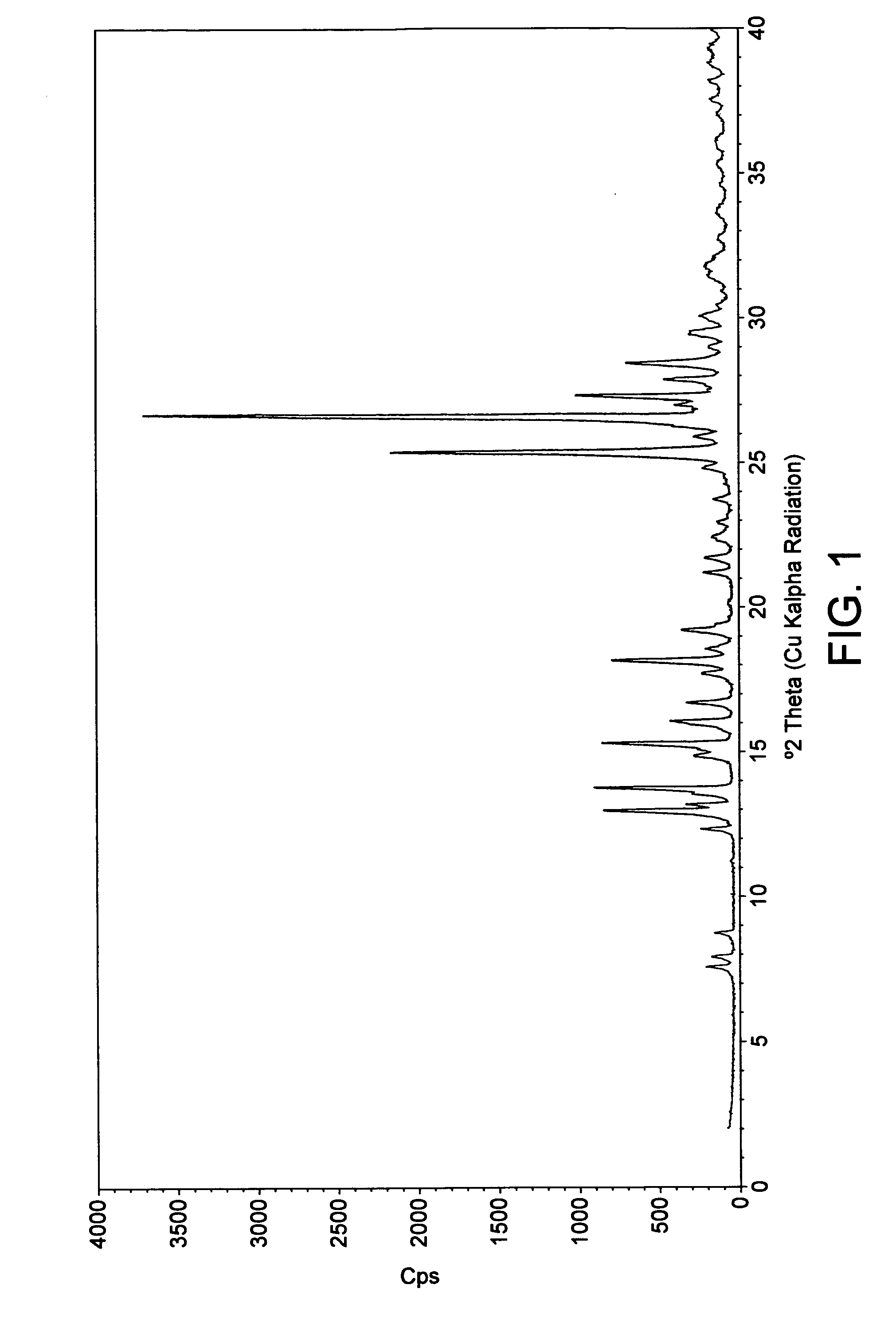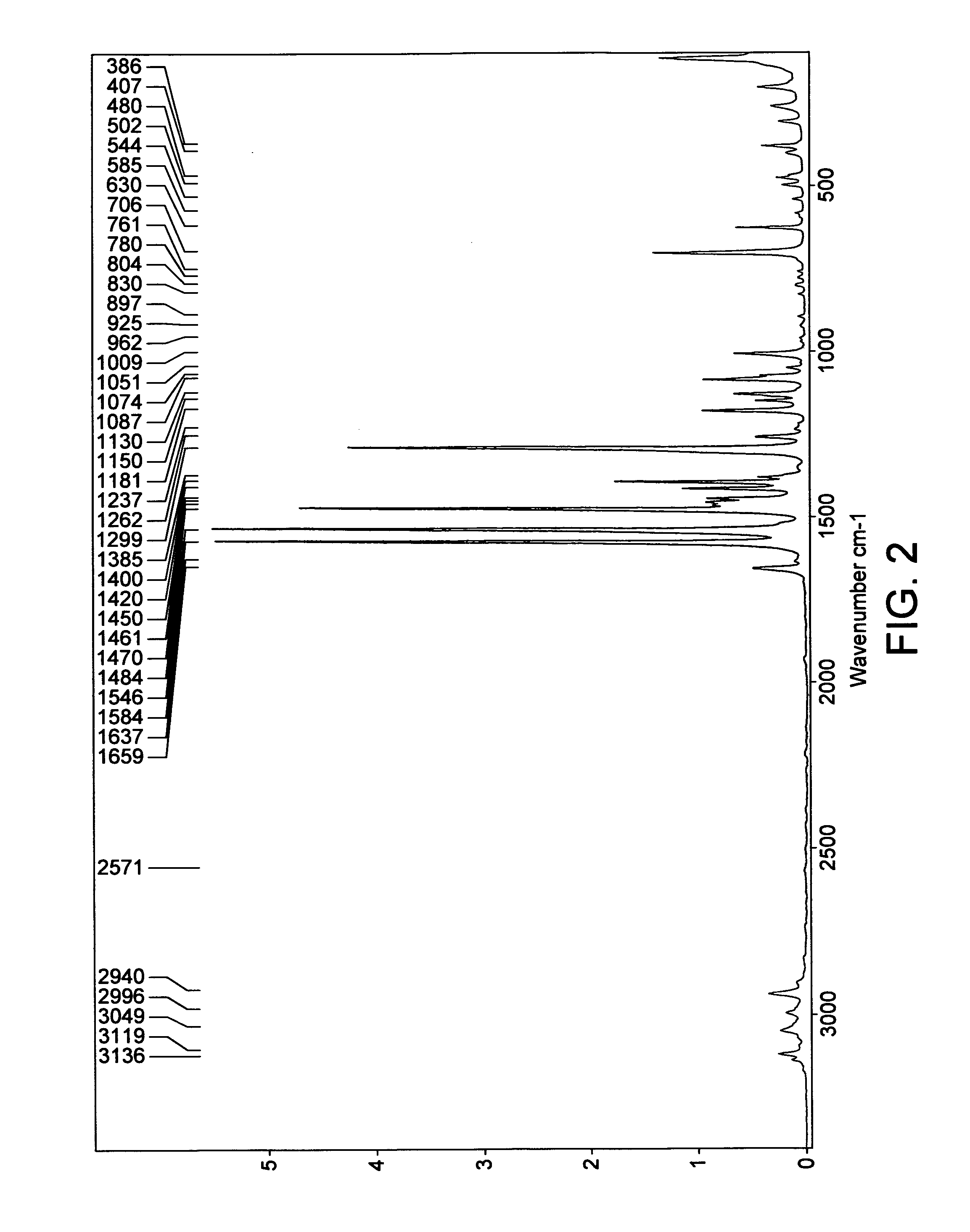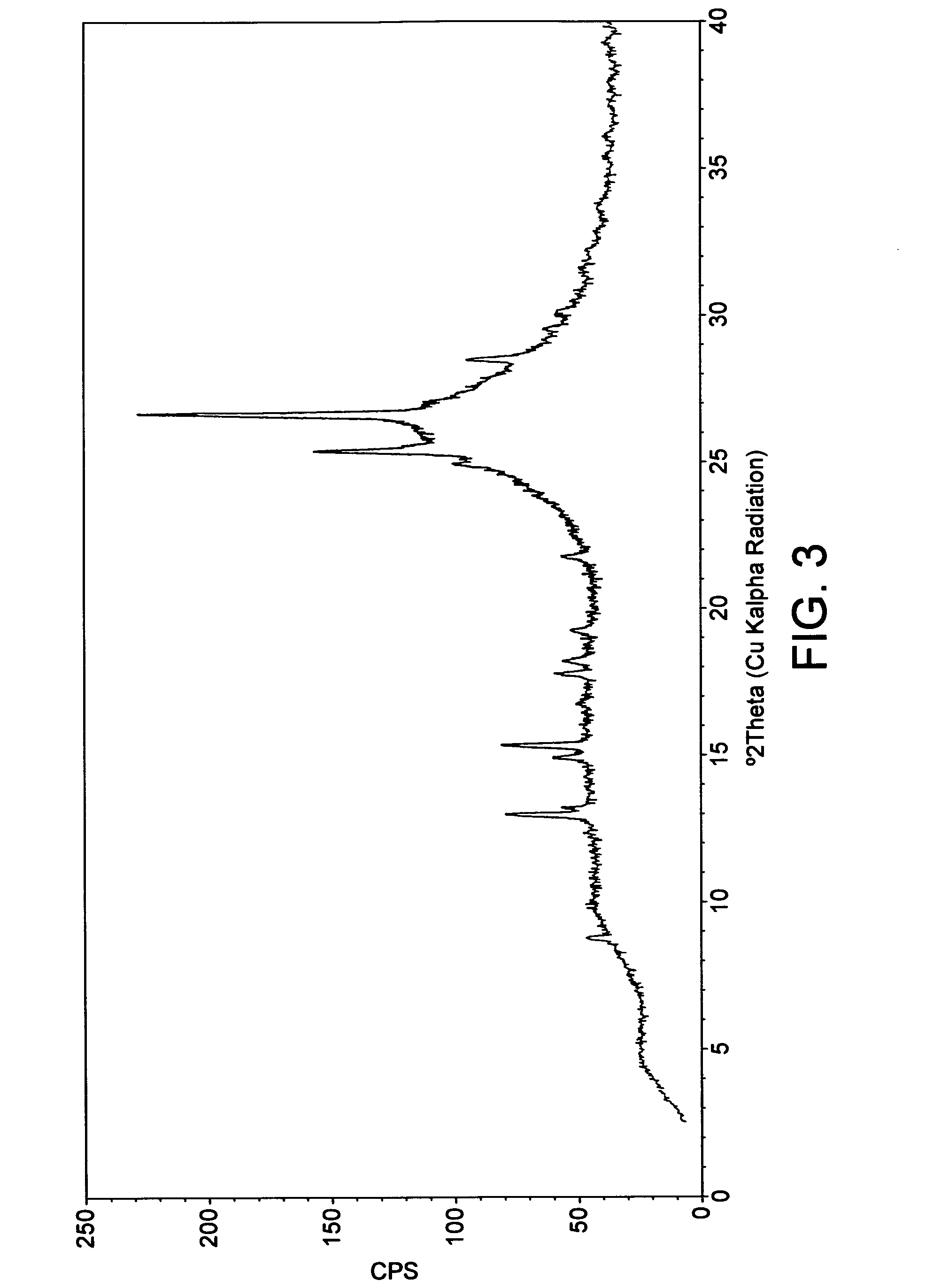New Crystalline Form of Pemirolast
a technology of pemirolast and crystalline form, which is applied in the direction of drug compositions, immunological disorders, metabolism disorders, etc., can solve the problems of chemical impureness, difficult handling and formulation, and significant problems of amorphous or semi-amorphous materials, so as to improve solubility and hygroscopicity profiles, improve chemical and solid state stability, and improve the effect of handling
- Summary
- Abstract
- Description
- Claims
- Application Information
AI Technical Summary
Benefits of technology
Problems solved by technology
Method used
Image
Examples
example 1
Pemirolast Sodium Hemihydrate
[0139]Pemirolast free acid was prepared by dissolving pemirolast potassium in water and acidifying to pH 1 with 6M HCl which caused the free acid to precipitate from solution. The crystals formed were filtered, washed with water and dried under vacuum. Pemirolast potassium was in turn prepared analogously to the methodology described in Example 4 (steps Ia and Ib) below, using 2M KOH instead of 2M NaOH, and recrystallising from water:isopropanol in a 1:2, instead of a 2:1, ratio.
[0140]Pemirolast free acid (89 mg) was suspended in 783 μL of 0.5 M sodium methoxide in methanol (Fluka). The suspension was stirred for one day. A precipitate was formed. After filtration and drying under vacuum for about 2 hours, a solid material was obtained (yield: 81 mg).
[0141]An elemental composition analysis is summarized in Table 1 below. The data indicate a hemihydrate of a pemirolast sodium salt with a 1:1 stoichiometry. The theoretical data were calculated for the form...
example 2
Pemirolast Sodium Hemihydrate
[0146]Pemirolast free acid (prepared as described in Example 1 above; 90 mg) was suspended in 791 μL of 0.5 M sodium methoxide in methanol (Fluka). The suspension was stirred for one day. A precipitate was formed. After filtration and drying under vacuum for about 1.5 hours, a solid material was obtained (yield: 59 mg).
[0147]The crystals were analyzed by FT-Raman. The relevant spectrum was essentially the same as that exhibited by the form obtained according to Example 1 above.
example 3
Comparison of Solubilities
[0148]About 40 mg of a sample (obtained by way of the procedure described in Example 2 above) was dispersed in 0.25 mL of doubly distilled water. The suspension was shaken at 22° C. for 24 hours. Afterwards, a fast solid / liquid-separation was performed using an Eppendorf Thermomixer Comfort (400 rpm). The suspensions were filtered with Millipore Centrifugal Filter Devices (PTFE filter; 0.2 μm) in a Centrifuge Hettich EBA 12 R (15,000 g, 1 minute, 22° C.). The concentration of the sample in the filtrate was analyzed by HPLC, and the solid phase was analyzed by FT-Raman spectroscopy.
[0149]The compound of Example 2 exhibited an aqueous solubility of 23.64 mg / mL under the studied conditions. The saturated solution had a pH of 8.0.
[0150]The aqueous solubility of the potassium salt of pemirolast (prepared as described in Example 1, second paragraph, and Example 2, above, using 3.4 M potassium methoxide in methanol (Fluka) instead of 0.5 M sodium methoxide in meth...
PUM
| Property | Measurement | Unit |
|---|---|---|
| w/w | aaaaa | aaaaa |
| temperature | aaaaa | aaaaa |
| temperatures | aaaaa | aaaaa |
Abstract
Description
Claims
Application Information
 Login to View More
Login to View More - R&D
- Intellectual Property
- Life Sciences
- Materials
- Tech Scout
- Unparalleled Data Quality
- Higher Quality Content
- 60% Fewer Hallucinations
Browse by: Latest US Patents, China's latest patents, Technical Efficacy Thesaurus, Application Domain, Technology Topic, Popular Technical Reports.
© 2025 PatSnap. All rights reserved.Legal|Privacy policy|Modern Slavery Act Transparency Statement|Sitemap|About US| Contact US: help@patsnap.com



